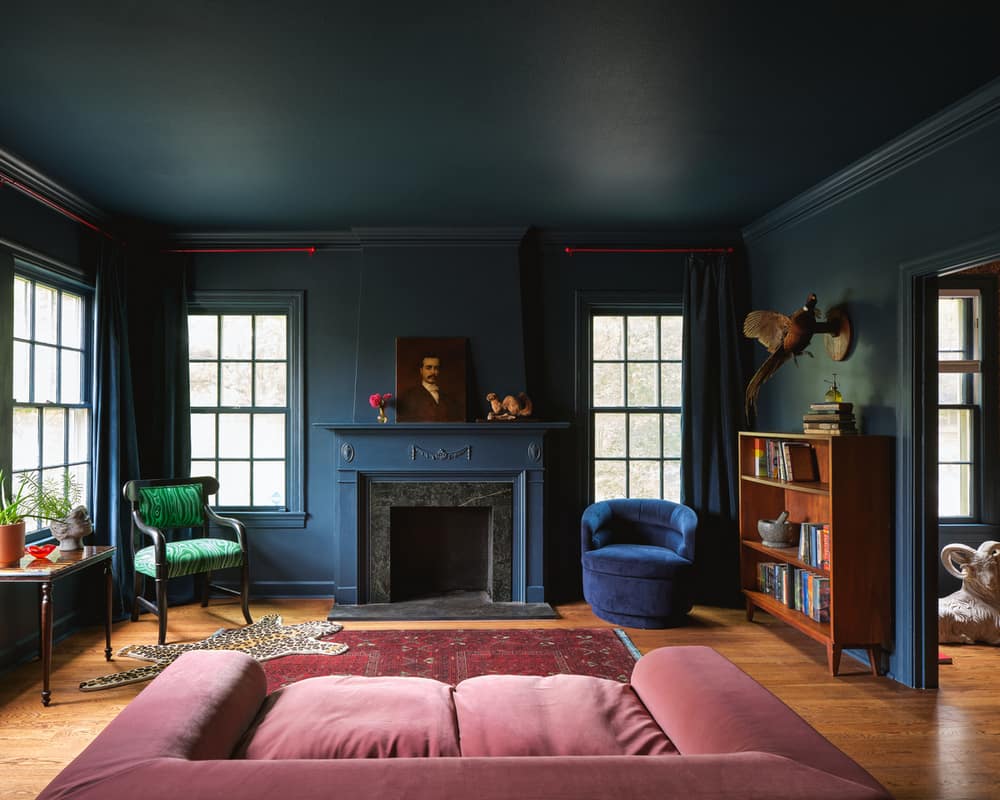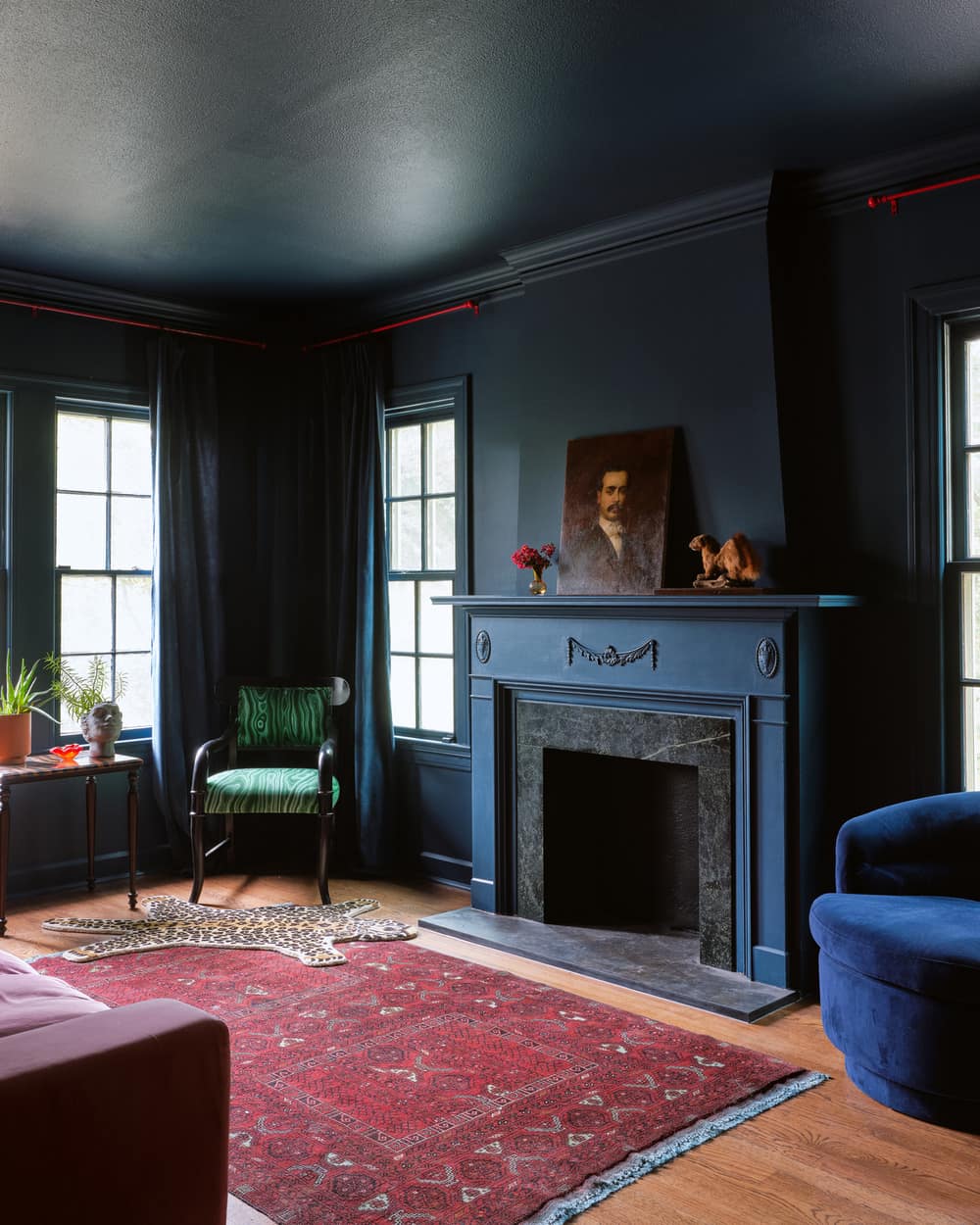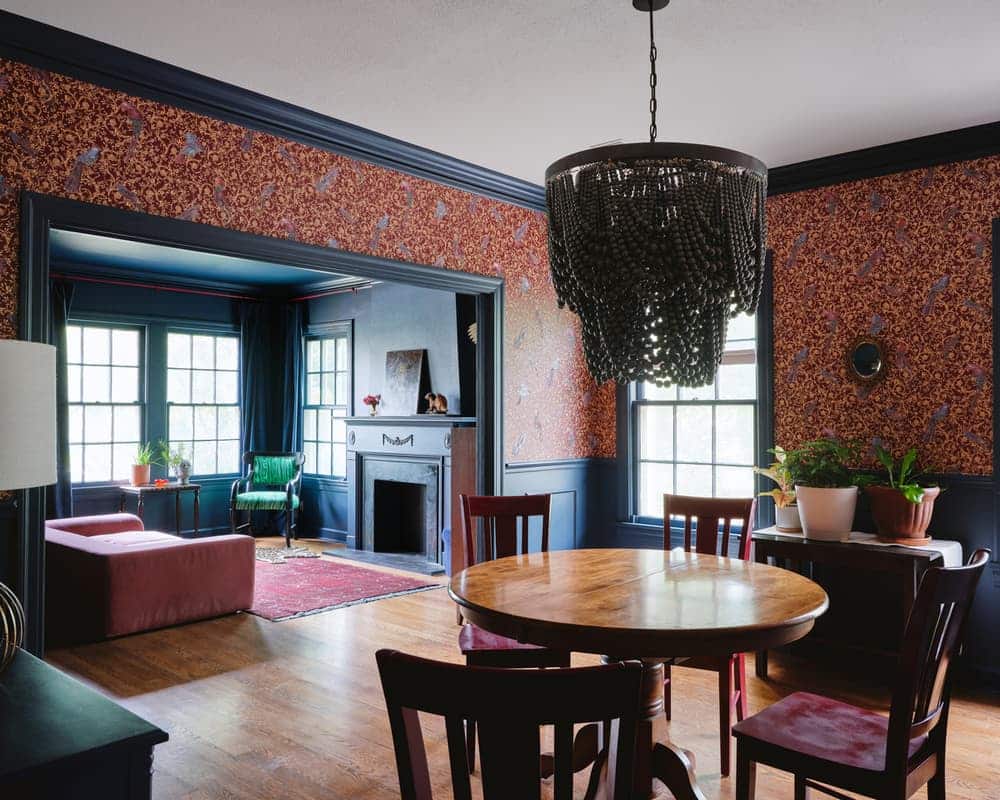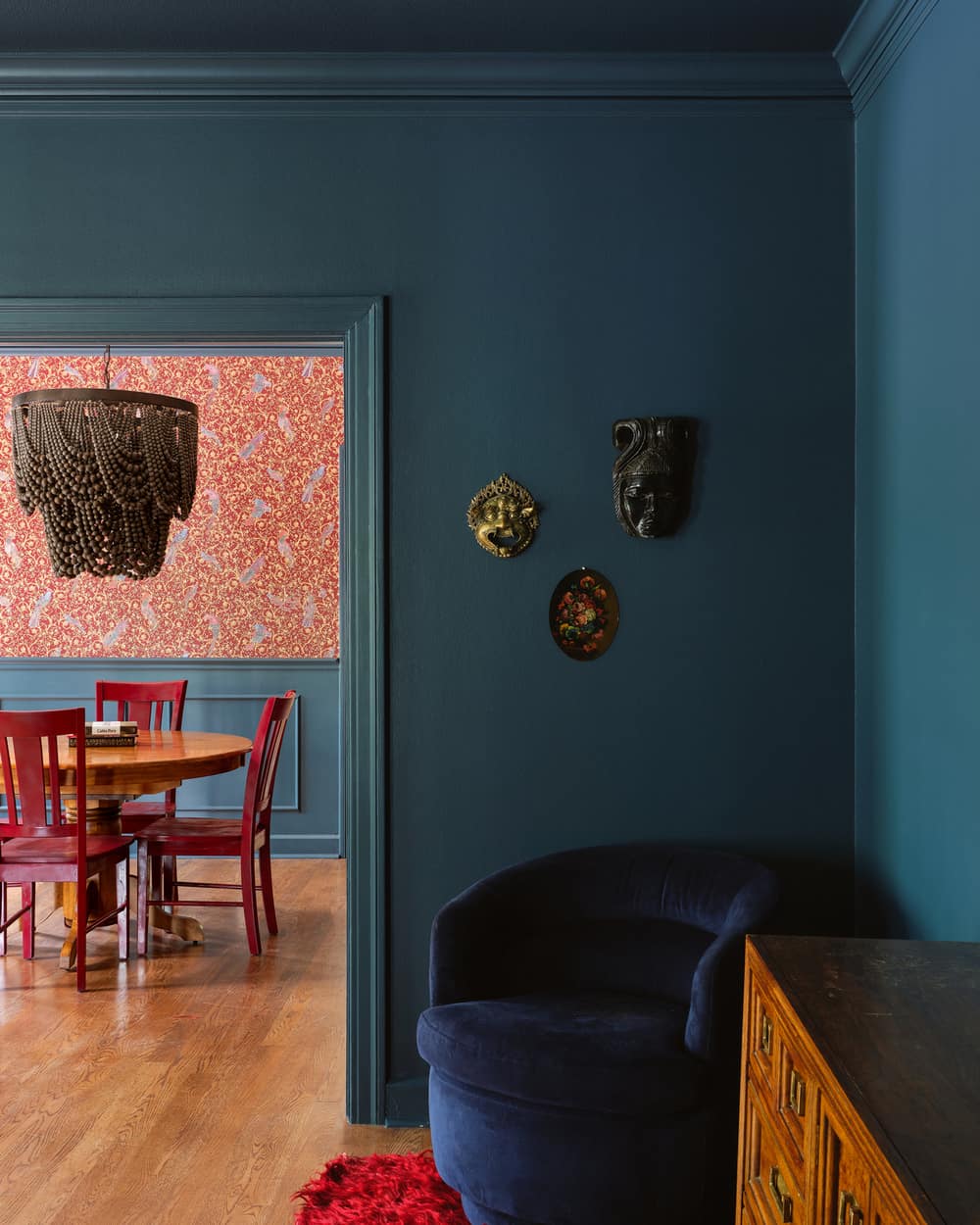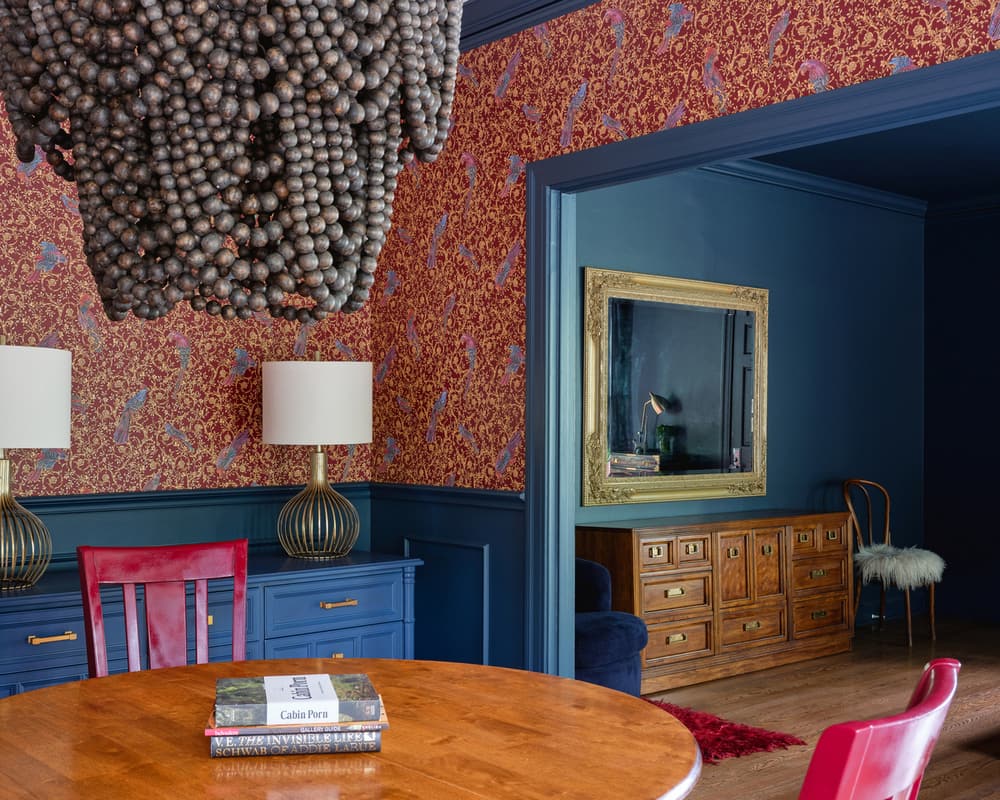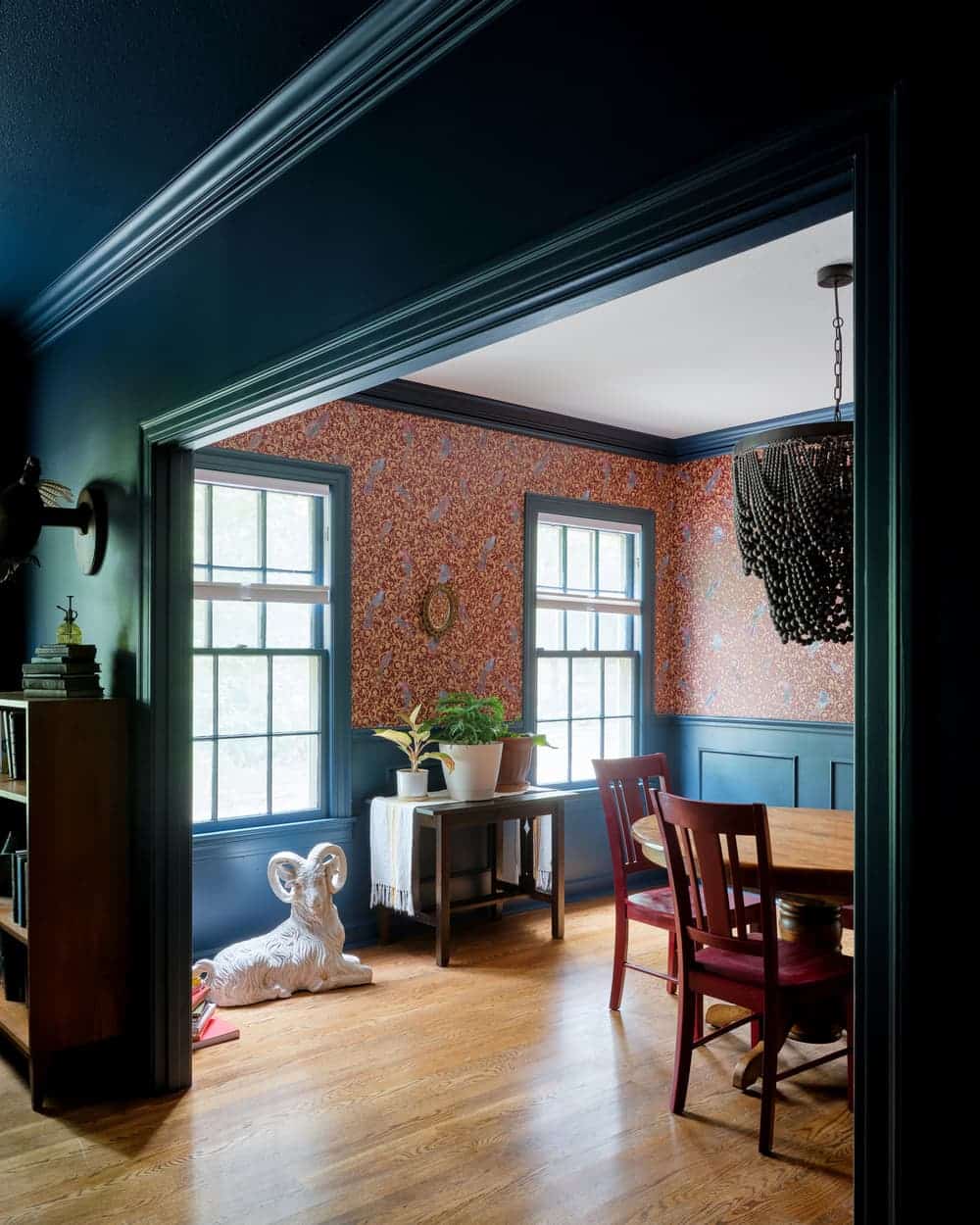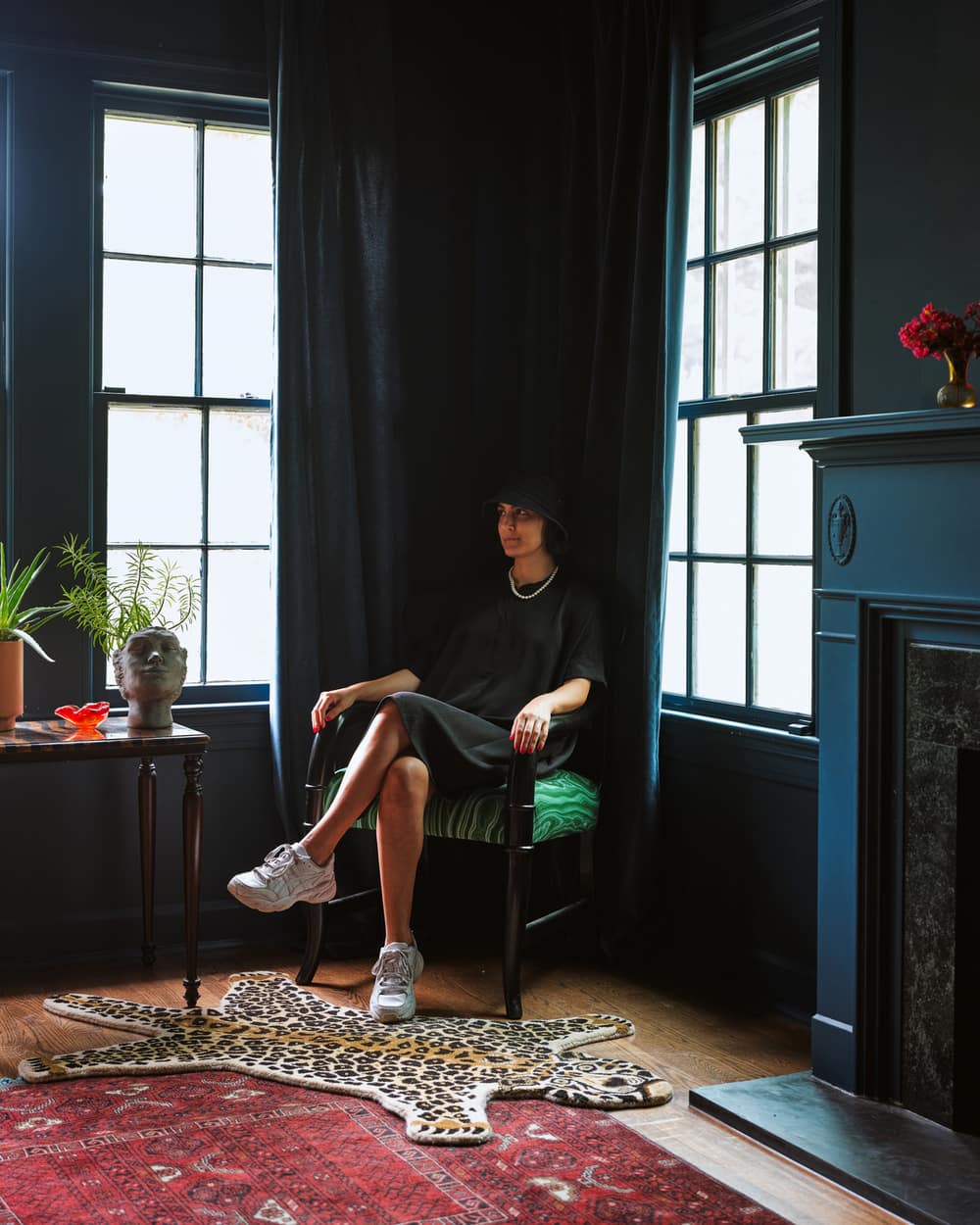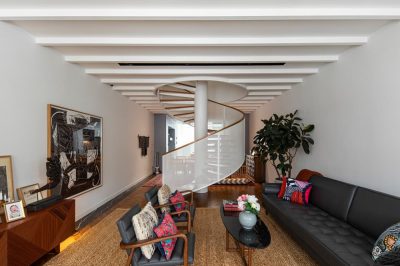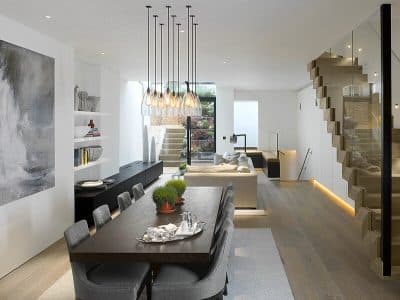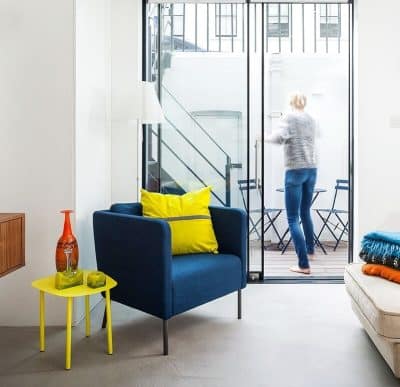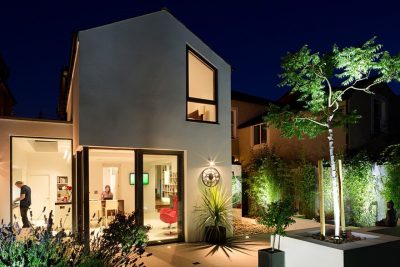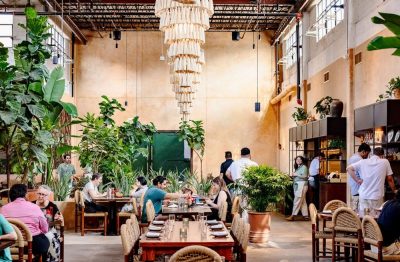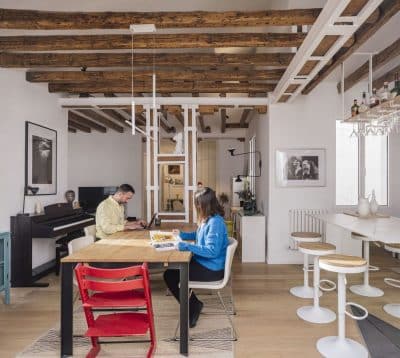Project: Paradoxes & Peculiarity Inside a Texas Bungalow Interior
Interior Design: Jeanne Schultz Design Studio
Location: Austin, Texas, United States
Year: 2021
Photography: Leonid Furmansky
Words by Wilson Hack
August Heckscher, as quoted by Robert Venturi in his book Complexity and Contradiction in Architecture, writes that “the movement from a view of life as essentially simple and orderly to a view of life as complex and ironic is what every individual passes through in becoming mature…a feeling for paradox allows seemingly dissimilar things to exist side by side, their very incongruity suggesting some kind of truth.”
Tucked away in the Hancock neighborhood of north Austin, an otherwise traditional Texas bungalow reveals a daring dose of truth: a smooth and sultry interior where darkness, delight, performance and peculiarity come together to elevate the orderly and mundane. The result is both poignant and subtle—full of curated complexities, decisive contradictions and above all, well-balanced cohesion.
Client Liz Lake and Barcelona-based Architect Jeanne Schultz teamed up after bonding over their love of horror films and taxidermy. “It was a love of oddities,” Schultz mused. Heavily influenced by art, film, culture and a child-like curiosity, the result is a beautiful misfit perfectly matched for living.
Ms. Lake initially requested something “cozy and practical” yet stressed her desire to maintain a “cool mom vibe”. Inspired by her time spent in Berlin, Lake requested that Schultz curate an undertone of smoky underbelly bars while firmly maintaining more mature (parental) sensibilities.
Schultz boldly began the transformation with an overhaul of color; Hague Blue by Farrow and Ball fundamentally engulfs the living room walls, ceiling and trim, allowing the original wood floors to effortlessly counter with visual contrast. Converting the space into a darker enclosure allowed for a curated array of objects to stand out, both on their own but also as part of a three-dimensional still life.
Layered carefully into the space are what Schultz refers to as a “series of vignettes” inspired by 17th century Dutch still life paintings. “Their purpose is simply to gaze,” explains Schultz. In each corner, small collections of moments begin to reveal themselves as an acute assemblage of curiosities. A taxidermy pheasant and squirrel, playfully known as Hector and Edna, draw their inspiration from an exploration of taxidermy art, a once criticized niche that has recently experienced a surge in popularity. “There’s a playfulness with the oddities,” Schultz says. “They invite you not to take them so seriously.”
A plastered ram sculpture sits perched on the floor of the dining room, acting perhaps as a decoy dog that Ms. Lake’s young son climbs on regularly. A series of vintage masks made of gilded brass and ebonized wood, purchased from the Gotic Mercado in Barcelona, adorn a small side wall in the living room, a nod to Schultz’s counter-cultural influence while working on the project (mostly from afar due to the pandemic).
Furniture was sourced locally in Austin, TX; pieces chosen were predominantly vintage. A pink velvet loveseat designed by Roche Bobois, dating back to the 1980’s anchors the living space. Pink spills into red— patterned, textured and thick, as exhibited by the poppy Turkish rugs. An arm chair painted in glossy black and upholstered in printed cotton, as well as a tessellated stone tortoiseshell table unearth an extra layer of jewel tones and textures. The dining room decisively shatters any chance for mundane continuity with a vivacious Barocco Birds print by Versace Home. Both the bird motif and the Persian-style leopard rug sitting at the foot of the arm chair in the living room make cheeky reference to the stuffed creatures posted on the walls. Kasmir curtains in an almost undetectable maison royale pattern soothe the transition from wall to window, a notable restraint that both blends in and stands out as another layer of unique texture. Little punches of unexpected color, such as the carnival red curtain rods and dining chairs result in a clear yet balanced break between warm and cool colors. “It feels maximalist yet it is still pretty pared back and sober,” explains Schultz.
Sitting at the table, the chandelier in the dining room dominates with its excessive scale. It softens upon closer inspection. The beads are made of wood, a unique material take on a baroque style. “It’s awesome,” Schultz says candidly. Paradoxically, oddly and delightfully—she is right.

